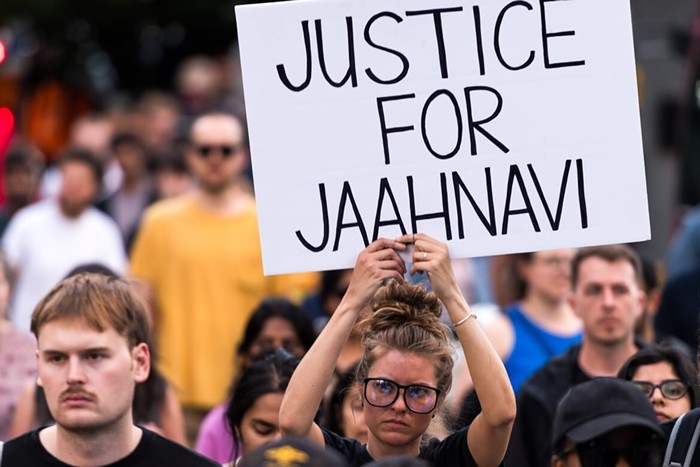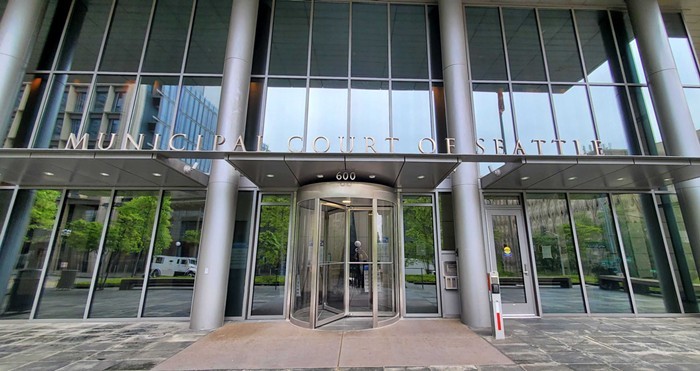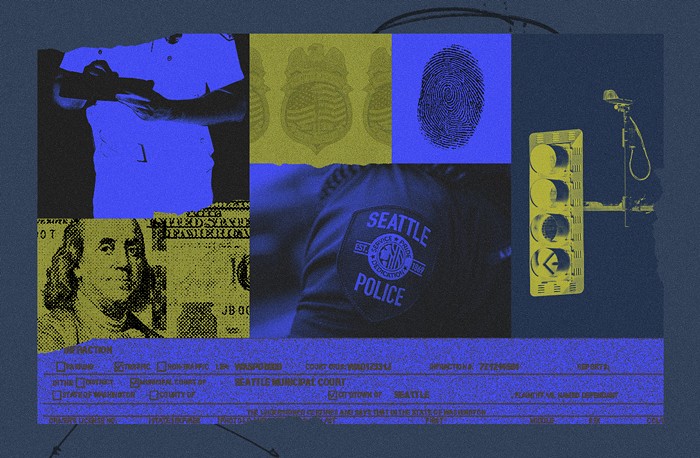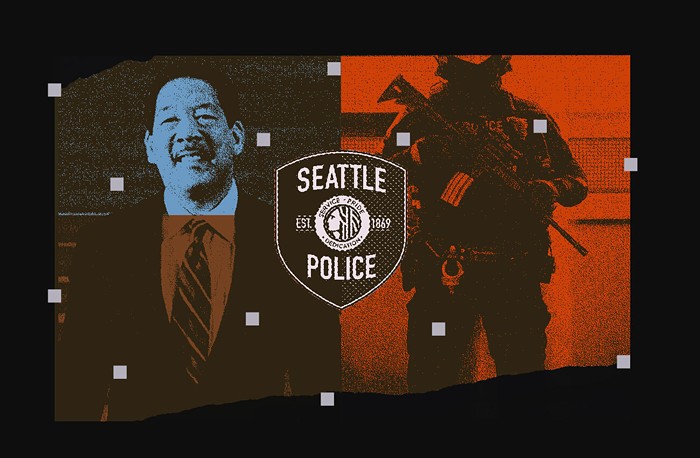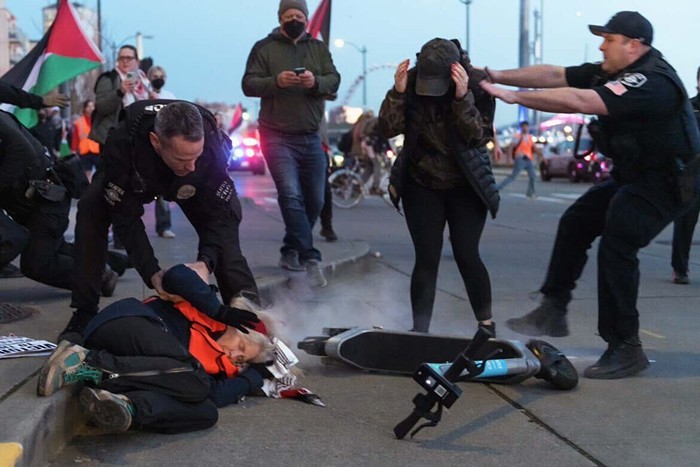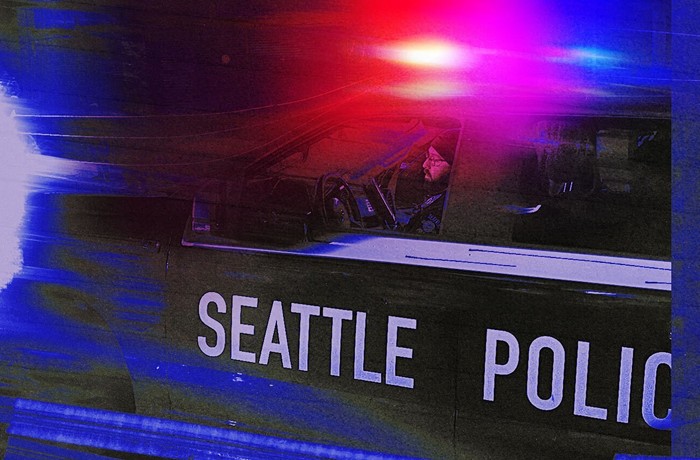
Iosia Faletogo ate his mother’s chicken soup on the day that he died, according to his aunt Kerina Ngauamo.
“On this day, Dec. 31, he calls his mother. He wasn’t feeling good, he wanted some of her famous chicken soup so his mom said, 'OK I’ll make that for you,'” Ngauamo said at a press conference Friday morning. “So he came over, ate, he thanked her, he said, 'Mom I’m going to pick up the boys and I’ll see you later at Auntie Kerina’s house and we’re going to bring in the new year together.'”
Faletogo never made it to his family’s New Year’s Eve party.
At around 5 p.m. on Monday he was pulled over by a Seattle Police Department officer on Highway 99 in North Seattle. The 39-year-old ran from the cops just as a backup patrol car pulled up. Six officers chased him across the highway and toward a side street, where they tackled him and struggled to arrest him. The cops spotted a handgun on Faletogo and then a single shot was fired from Officer Jared Keller’s gun and Faletogo’s body went limp. The Seattle Police Department said he died at the scene.
Faletogo’s family is now demanding answers from SPD and calling for an independent investigation. SPD has already commenced an internal investigation, which they say is being supervised by two city accountability groups with the city, the Office of Police Accountability and the Office of the Inspector General. On Thursday, SPD released a photo of a loaded gun they say was found at the scene as well as graphic footage from the officer’s dash cam and five body cameras worn by the officers on the scene.
The videos offer unprecedented detail of the scene from six different angles, giving insight into both the actions of Faletogo and the six different officers. Debate has already emerged over what exactly is happening in the videos but a few things are immediately clear. A handgun can be seen near Faletogo during the video, possibly on the ground or being held by its muzzle. The officers repeatedly told him that he was going to get shot. One officer can be heard yelling “taser, taser, taser.”

Keller, the officer that fatally shot Faletogo according to SPD, was previously part of a deadly use of force by SPD when seven officers, including Keller, opened fire on a man in December of 2017. That man was allegedly armed with a gun.
Police reform activist Andre Taylor, who is helping Faletogo’s family through his group Not This Time, said it was troubling that the police officers told Faletogo they were going to shoot him as soon as he started running before, according to Taylor, they knew he had a gun.
“The first thing they said when he got out of the car was ‘If you don’t stop we’re going to shoot.’ Had they known he had a gun at that time it would have been, ‘Gun, he has a gun!’” Taylor said.
Taylor’s own brother was killed by officers from Seattle’s North Precinct in February of 2016, which led him to create the Not This Time group, which he has used to counsel the families of shooting victims as well as advocate for police reform. Taylor was part of the group that successfully passed Initiative 940 last year, which makes it easier to hold cops criminally accountable for killing civilians. The initiative also requires independent investigations of deadly uses of police force. Taylor said SPD’s Force Investigation Team, which is currently investigating the shooting, does not qualify as an independent unit.
The city’s Community Police Commission, which provides civilian oversight over SPD, agreed, publishing a letter earlier this week that called for the city to clarify how it was meeting I-940’s independent investigation requirements. Mayor Jenny Durkan, SPD Chief Carmen Best, and City Attorney Pete Holmes replied in a letter yesterday saying that they are waiting for further guidance from the state on how to comply with I-940’s regulations.
“The city is eager to move forward with the implementation of I-940 and anticipates that it will engage with the Washington State Criminal Justice Training Commission as it drafts new regulations that either designate existing entities or establish new entities that will be entrusted with conducting the independent investigations that I-940 requires. These regulations, in addition will need to establish required procedures governing how the investigations shall be carried out,' the letter states.
On Thursday night, the Seattle chapter of the NAACP called on King County Prosecutor Dan Satterberg to launch an independent investigation into the killing.
“It is naïve to rely upon an investigation conducted by the SPD, the agency responsible for the death, as guidance for a decision whether or not to file criminal charges, to determine whether this homicide was excusable or justifiable,” the NAACP said in a letter.
In the past, Satterberg has repeatedly declined to prosecute officers after they kill civilians, including the killing of Native American woodcarver John T. Williams in 2010, because of a state law that requires prosecutors prove that an officer acted "with malice" when they kill. That was probably the highest standard in the country for charging officers with killings. During the Williams case, Satterberg printed off a large poster of a state law so he could literally point to the state's "malice" statute in front of reporters at a press conference. I-940 removed the state’s malice standard, making it easier for prosecutors like Satterberg to charge cops when they wrongly kill. Taylor said the community will be watching Satterberg’s actions closely.
“That law no longer exists and we expect you to follow the law, the new law,” Taylor said.
Taylor said on Friday morning that Durkan assured him in a phone call Thursday night she would require a fair investigation would take place.

This is at least the fourth deadly shooting by a police officer in Seattle’s North Precinct in the last four years. In addition to Che Taylor’s death in February of 2016, Charleena Lyles died in 2017, Kyle M. Gray died in 2017, and now Faletogo died in 2018. Lyles, a pregnant mother, was killed in her home in Magnuson Park while her children watched. Officer said Lyles lunged at them with a knife. Taylor was killed while he stood outside a vehicle when two officers approached him from behind; a gun was found near his body. Gray was killed after he led officers on a car chase to Magnuson Park, where seven SPD officers opened fire on the allegedly armed man. Keller, the same officer that allegedly killed Faletogo, was one of the officers that reportedly opened fire on Gray.
Taylor said officers in the North Precinct appear to be following a pattern of “We’ll shoot you first and ask questions later."
"What’s in the water up there? Some of the most high-profile shootings in the city and the state happen in the North Precinct," Taylor said.
Ngauamo, Falatego’s aunt, said it’s painful to hear her nephew’s name repeated over and over again now that he is dead.
“We want people to hear his name, because he was a human being,” Ngauamo said while she held back tears. “Yes it hurts to hear his name but we are going to keep saying his name until this community and this state understand what we are feeling, what all of these families feel about their loved ones.”


